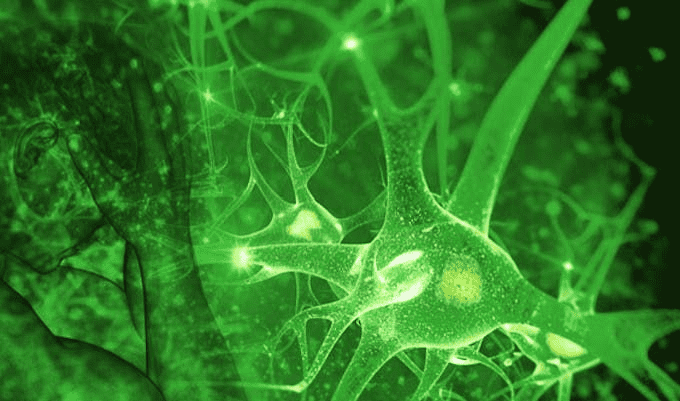The endocannabinoid system, the series of cannabinoid receptors throughout the human body, was named for the drug that sparked its discovery, cannabis. As researchers strove to learn more about how cannabis affected the human body, they discovered a series of cannabinoid receptors, which respond to cannabinoids produced by the body and those present in marijuana.
Cannabinoid receptors are found in the brain, organs, connective tissue, glands and immune cells, making them essential to the function of almost all parts of the human body. All animal species, with the exception of bugs, have an endocannabinoid system, and researchers believe it evolved approximately 600 million years ago. Though there are many gaps in the scientific knowledge of the endocannabinoid system, scientists have still gathered a lot of information on its function within the human body.
The endocannbinoid system responds to both endocannabinoids, cannabinoids produced within the body, and phyotocannabinoids, cannabinoids that are sourced from plants. There are believed to be several endocannabinoids, but the two most well understood are anandamide and 2-arachidonolyglycerol.
Phytocannabinoids have mostly been identified from Cannabis sativa, but they have also been found in other medicinal herbs, such as Echinacea purpura. The most well-known cannabinoids from cannabis are THC and CBD. Cannabinoids can be psychoactive, as is the case with THC, though most cannabinoids are non-psychoactive.
The Endocannabinoid System in the Human Body
Scientists believe there are more cannabinoid receptors present than any other receptor in the human body. Two specific kinds of cannabinoid receptors have been identified to make up the endocannabinoid system. The CB1 receptor is normally present in the nervous system, connective tissues, gonads, glands and organs, whereas the CB2 receptor is present in the immune system and associated structures.
Due to the fact that cannabinoid receptors reach into almost every part of the body, cannabinoids are integral in many different bodily functions. Cannabinoids are used in intercellular communication, and since their discovery, have helped us better understand the bridges between body and mind.
Cannabinoids are also crucial in the process of maintaining homeostasis within cells and the body as a whole. The endocannabinoid system regulates autophagy, a process in which the cell segregates one part of its contents to be self-digested. It's extremely important that the body maintain the correct balance of cannabinoids in order to function properly and keep the whole body healthy.
“While this process keeps normal cells alive, allowing them to maintain a balance between the synthesis, degradation, and subsequent recycling of cellular products, it has a deadly effect on malignant tumor cells, causing them to consume themselves in a programmed cellular suicide. The death of cancer cells, of course, promotes homeostasis and survival at the level of the entire organism,” said Dustin Sulak, DO to Norml.
How Cannabis Works on Our Endocannabinoid System
Cannabinoids from marijuana can stimulate or mimic our natural cannabinoid production. When phytocannabinoids are introduced, they can cause an increase of cannabinoid receptors in the body. This increase in cannabinoid receptors can help to explain why people don't “feel” any effects the first time they take marijuana. But their heightened number of cannabinoid receptors, once they've previously introduced cannabinoids into their body, causes a more prominent effect.
Cannabis can work synergistically with the endocannabinoids produced inside the body to bring the body into homeostasis. Cannabis, unlike other synthetic medications, works in harmony with the body to bring it into health by obtaining equilibrium.
The Key to Many Chronic Illnesses
Clinical Endocannabinoid Deficiency (CECD) is believed to occur when endocannabinoid levels are found to be persistently lower than healthy control. The cause of CECD is unknown, but it is believed that an imbalance of cannabinoids could either be congenital or acquired throughout a period of time. Low endocannabinoid levels could be the cause of some chronic illnesses, rather than just a symptom. CECD is most often attributed to fibromyalgia, migraines, irritable bowel syndrome (IBS), autism spectrum disorder (ASD) and cystic fibrosis.
Many sufferers of the five conditions that are thought to be attributed to CECD often feel relief when using marijuana as a medication. Cannabinoids, such as THC, have been found to inhibit serotonin release in migraine sufferers, thereby relieving symptoms.
IBS is thought to be related to endocannabinoid and serotonergic signaling. Though research into the connection is limited, this connection suggests that CB receptors may be a good target in alleviating IBS-related complications.
ASD has been linked to dysfunctional endocannabinoid signaling. This altered endocannabinoid expression suggests that there may be scientific backing for the anecdotal reports from parents who've had success administering medical marijuana to their children with ASD.
And finally, 2011 study suggests that chronic congenital cystic fibrosis is the result of imbalanced endocannabinoid levels, indicating that phytocannabinoids could be viable routes of treatment.
How Can Cannabis Help?
The endocannabinoid system is all about balance and equilibrium. Finding the proper treatment is unique to each individual because it involves balancing cannabinoids found in the body with those provided by medical marijuana. Most current research seems to point to success using high-THC, low-CBD strains when combatting CECD-related conditions. That said, CBD appears to be very helpful in alleviating symptoms in other conditions.
As more research is done on the endocannabinoid system in the human body, medical marijuana prescriptions can become more precise and be less of a trial-and-error process. The increase in knowledge of the benefits of medical marijuana in aiding the body's own endocannabinoid system is crucial.
Doctors today don't even learn about the endocannabinoid system in medical school, which is extremely detrimental to the overall health of the population. The first textbook on medical marijuana, however, is being released on May 31, 2016, giving hope for increased learning on the endocannabinoid system.
Interested in asking a question about this topic? Go to HelloMD Answers and ask one of our doctors or community.
If you're new to cannabis and want to learn more, take a look at our Cannabis 101 post. HelloMD can help you get your medical marijuana recommendation; it's easy, private and 100% online.
